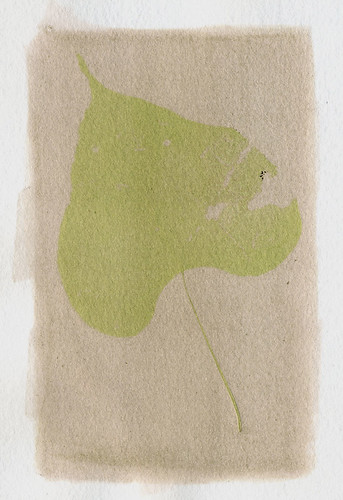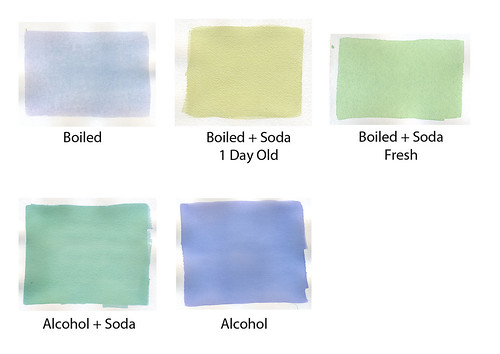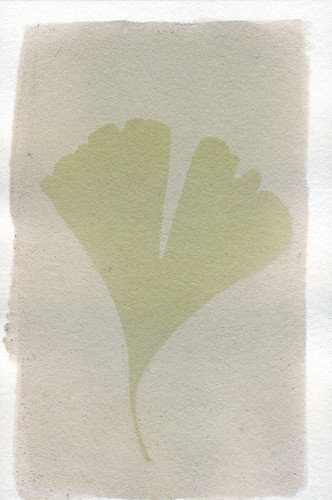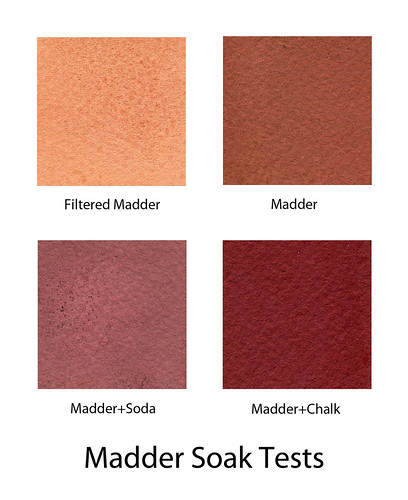Nuts to you, madder root. According to numerous sources, this was the dye used by the British and it was the reason the "redcoats" were red. With various mordants, specifically alum and chalk, it is supposed to deliver a rich, crimson red. I think history is
lying. Of course, some of that could be a result of me trying to use the dye on paper instead of fabric, but my tests on fabric didn't come out that good either.
I've tried many different methods of mixing madder root. I gave a brief over-view of the struggle in my Rainbow Reverie: Red post, but I feel the need to go more in-depth. This is an extremely troublesome dye and given all the effort I've put into it, I want to document clearly why I think it's just not worth my time to continue investigating.
My first attempt at madder root was to purchase actual roots. Following instructions from the supplier, I chopped the roots up, soaked them overnight, ran the through a blender to chop them even more and then slowly raised them to a simmer and kept the there for over an hour. The water that resulted was nice and bloody, but left virtually
no stain at all on paper. It did soak into fabric pretty well and I even added some alum to that mix. However after exposing the dyed fabric for a week, I had no decent image. What is there may actually be the result of water from fresh leaves soaking in and washing off the dye. So, overall, my attempt with using the roots themselves was a bust. Still, I've decided to try again and have some roots soaking right now.
I later learned that madder root can be purchased as a concentrated powder, so I ordered some of that. It arrived and was distressingly
brown. Right off, I mixed some of the powder with alcohol and tested it. Not terrible, but not
red.
Further testing ensued, with the madder powder being combined with chalk (crushed sticks, not actual chalk which is on a list of things to test with later now that I know that chalk isn't chalk), baking soda (to raise the pH), citric acid (to lower the pH), cream of tartar (a suggested mordant) and alum (another mordant suggested for true reds). I tried microwaving the liquid, simmering it for extended periods of time, dripping the liquid through a coffee filter to remove the particles and applying the dye as a thick paste. I got a lot if
different results (see below), but none of them are
red. They're certainly reddish, but not red. At this point, I'm pretty sure that madder just isn't where I need to go for a true red in anthotypes. The problem is, I don't know where else to look.
Beet juice is supposed to be a great red food dye, but when I make the liquid, it brushes on as a bubblegum pink. I tried adding vinegar as suggested in some recipes and it gets a
bit darker, but not too much. Previous experience with boiling dyes tells me that if I try reducing the liquid down, it'll ruin the pigment.. but I might have to try anyway and see what happens. I can always get more beets.
The last really well-known red dye from a natural source is cochineal, also called carmine. It's gathered from crushed insects native to south-central America. I don't want to deal with the process required to extract the dye from the bugs, and the little things are
expensive. Really, really expensive. Maybe sometime in the future, or if I can figure out a way to order it through the university... but until something like that happens, cochineal is just out of my range. Plus, it seems to require some work as well and I'm not certain if it could be used for dyeing paper.
There's something called 'lac', which is from India and is related to cochineal, but it's either just as expensive as cochineal or even more expensive. I have the same concerns about if it would work on paper because as far as I can tell, lac requires chemical shenanigans to release the colors. It also seems to favor red-violets instead of true reds.
So, for the moment, I'm lacking a real red. I may just have to deal with that, but I have two last hopes before I give up on the color.
1) I am attempting to make that second batch of madder dye from the roots. I will be SURE to follow the dyer's directions as carefully as possible, not skipping any steps or shortening anything. Once I obtain the dyebath, I will then try soaking the paper in it, using it on fabric and also reducing some of it down via simmering (not boiling) to paint onto paper.
2) I'm going to try soaking some small paper samples in my current batches of madder and see if extended exposure to the dyes gives better results. I may also test this with fabric.
If you were wondering what all this experimentation yielded, well, I've got a lovely table of the results so far right here.


















